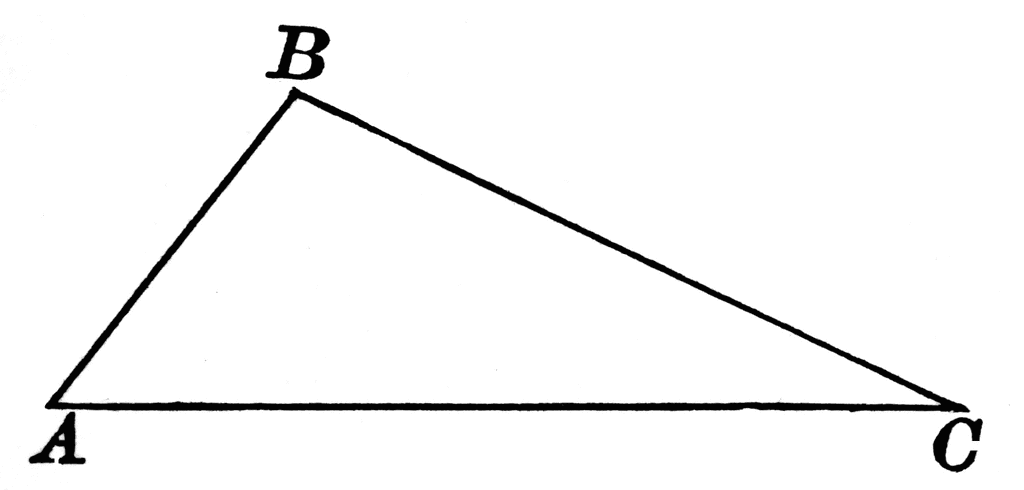All ACT Math Resources
Example Questions
Example Question #2 : How To Find An Angle In An Acute / Obtuse Isosceles Triangle
The base angle of an isosceles triangle is thirteen more than three times the vertex angle. What is the difference between the vertex angle and the base angle?
Every triangle has 
Let 

The equation to solve becomes 
Now we can solve for the vertex angle.
The difference between the vertex angle and the base angle is 
Example Question #31 : Isosceles Triangles
A particular acute isosceles triangle has an internal angle measuring 
By definition, an acute isosceles triangle will have at least two sides (and at least two corresponding angles) that are congruent, and no angle will be greater than 




Example Question #3 : How To Find An Angle In An Acute / Obtuse Isosceles Triangle

In triangle ABC, Angle A = x degrees, Angle B = 2x degrees, and Angle C = 3x+30 degrees. How many degrees is Angle B?
45°
30°
50°
105°
25°
50°
Because the interior angles of a triangle add up to 180°, we can create an equation using the variables given in the problem: x+2x+(3x+30)=180. This simplifies to 6X+30=180. When we subtract 30 from both sides, we get 6x=150. Then, when we divide both sides by 6, we get x=25. Because Angle B=2x degrees, we multiply 25 times 2. Thus, Angle B is equal to 50°. If you got an answer of 25, you may have forgotten to multiply by 2. If you got 105, you may have found Angle C instead of Angle B.
Example Question #11 : Triangles
A triangle has a perimeter of 


The answer is 
Since we know that the permieter is 










Example Question #231 : Plane Geometry
In the standard 


To form an isosceles triangle here, we need to create a third vertex whose 






Example Question #232 : Plane Geometry

Note: Figure is not drawn to scale.
In the figure above, points 






Because 



We know that 




Example Question #233 : Plane Geometry
A light beam of pure white light is aimed horizontally at a prism, which splits the light into two streams that diverge at a 

What is the distance, in feet, between the two sensors?
Round your final answer to the nearest tenth. Do not round until then.
This problem can be solved when one realizes that the light beam's split has resulted in an acute isosceles triangle. The triangle as stated has two sides of 




Since we know at least two angles and at least one side of our triangle, we can use the Law of Sines to calculate the remainder. The Law of Sines says that for any triangle with angles 




Plugging in one of our 


Next, cross-multiply:

Now simplify and solve:
Rounding, we see our missing side is 
Example Question #1 : Acute / Obtuse Isosceles Triangles
An isosceles triangle has a base of 


Example Question #234 : Plane Geometry
What is the height of an isosceles triangle which has a base of 

The area of a triangle is given by the equation:
In this case, we are given the area (


To do this, we must plug in the given values for 

We then must multiply the right side, and then divide the entire equation by 2, in order to solve for 
Therefore, the height of the triangle is 
Example Question #1 : How To Find If Of Acute / Obtuse Isosceles Triangles Are Congruent
There are two obtuse triangles. The obtuse angle of triangle one is 

The two triangles cannot be congruent
When the sum of angle A and angle B in triangle 1 is equal to the sum of the corresponding angles in triangle 2
The two triangles must be congruent
When the obtuse angle is congruent to the smallest angle of the other triangle
Cannot be determined
The two triangles cannot be congruent
In order for two obtuse triangles to be congruent, the sum of the two smaller angles must equal the sum of the two smaller angles of the second triangle. That is, excluding the obtuse angle.
The first triangle has an obtuse angle of 




All ACT Math Resources




























































